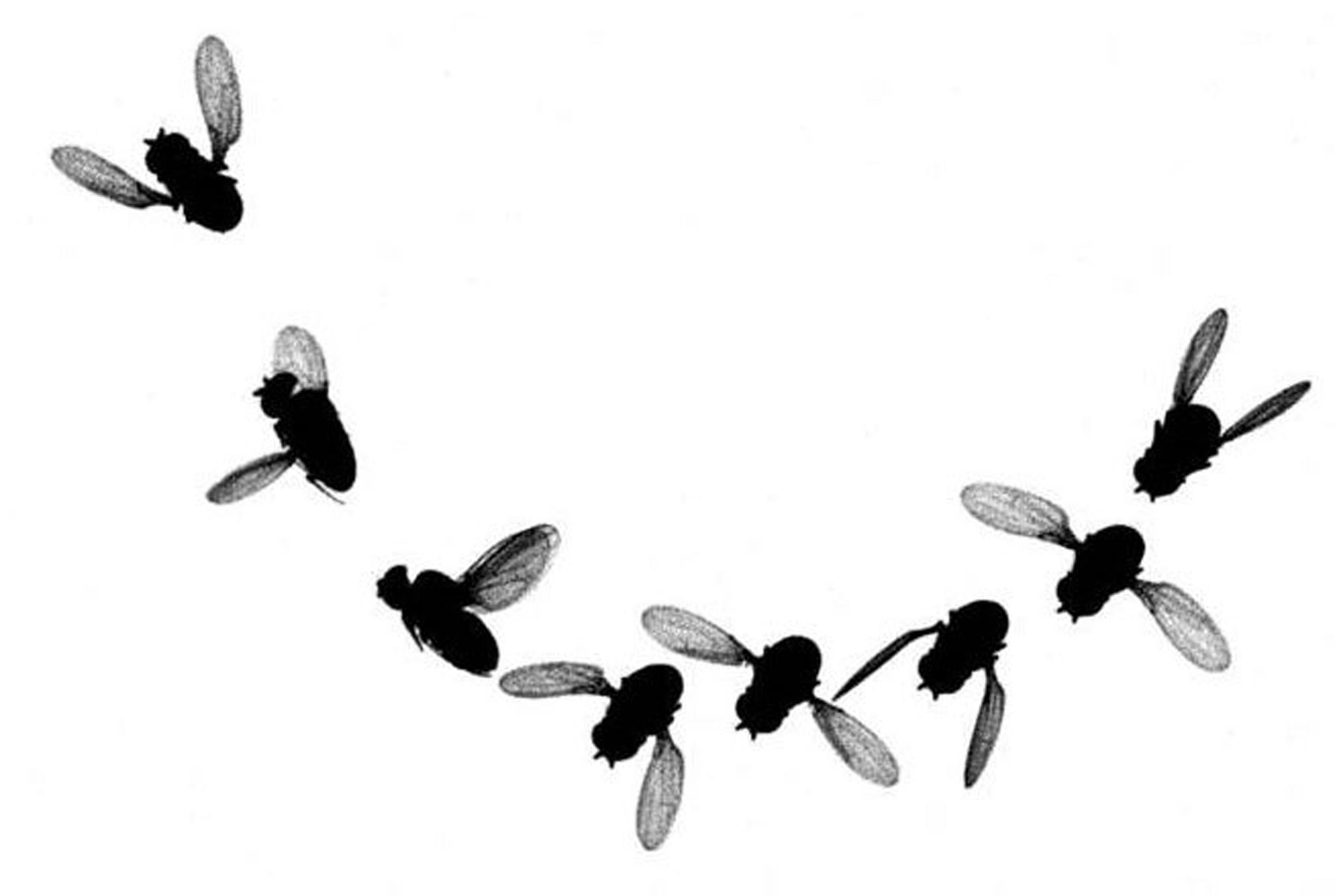Fruit flies have evolved to avoid death with 'barrel-rolls' performed 50 times faster than we can blink

Swatting a fly has never been easy and now scientists have found out why – the insect has perfected a cunning, high-speed technique for a quick U-turn.
Despite having a brain not much bigger than a grain of salt, a fly is able to coordinate its movements so rapidly that the turning technique has until now escaped scientific analysis.
An experiment with a set of three high-speed cameras working at 7,500 frames per second has captured the moment when a fruit fly is able to change its direction of flight with just a few beats of its wings.
Scientists have found that the fly is able to change the angle of its wings so that in less than a few hundredths of a second its body begins to rotate first in one direction and then in the other to produce what is called a “banked turn” similar to the rolling turns of a fast-moving jet fighter.
Rolling its body in mid-flight gives the insect much greater agility and control than had previously been thought possible, according to Michael Dickinson of the University of Washington who led the study published in the journal Science.
“Although they have been described as swimming through the air, tiny flies actually roll their bodies just like aircraft in a banked turn to manoeuvre away from impending threats,” Professor Dickinson said.
“We discovered that fruit flies alter course in less than one-hundredth of a second, 50 times faster than we blink our eyes, and which is faster than we ever imagined,” he said.
The experiment involved filming fruit flies within a cylindrical flying arena, at the centre of which was an intersection of two laser beams which, when broken by a fly, triggered an expanding shadow to simulate the sudden appearance of a potential predator.
High speed cameras captured about 40 frames for each beat of a fly’s wing, which enabled the researchers to see how the insects managed to roll their bodies from side to side in preparation for a quick U-turn.
“The brain of the fly performs a very sophisticated calculation in a very short amount of time to determine where the danger lies and exactly how to bank for the best escape, doing something different if the threat is to the side, straight ahead or behind,” Professor Dickinson said.
“How can such a small brain generate so many remarkable behaviours? A fly with a brain the size of a salt grain has the behavioural repertoire nearly as complex as a much larger animal such as a mouse,” he said.
“That’s a super interesting problem from an engineering perspective,” he added.
Previous studies on the flight of flies have suggested that the angle of wing beating alters the yaw – the side to side movements – of the fly but the latest study suggests that roll, the rotation of the fly’s body, is the key ingredient that allows the fast-moving banked turn.
“These flies normally flap their wings 200 times a second and, in almost a single wing beat, the animal can orient its body to generate a force away from the threatening stimulus and then continues to accelerate,” said Florian Muijres, a Washington University researcher and lead author of the study.
The next stage of the research is to work out how the tiny brain and muscles of the fly is able to control these remarkably fast movements which have been honed by evolution for tens of millions of years.
Subscribe to Independent Premium to bookmark this article
Want to bookmark your favourite articles and stories to read or reference later? Start your Independent Premium subscription today.

Join our commenting forum
Join thought-provoking conversations, follow other Independent readers and see their replies